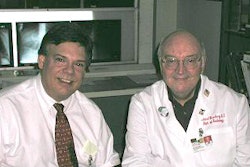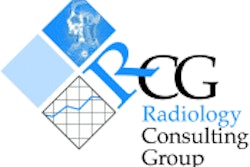Could the shortage of radiologic technologists be coming to an end? There are signs that this could be the case as more workers enter the profession, according to a recent survey of the RT job market by the American Society of Radiologic Technologists (ASRT) of Albuquerque, NM.
The vacancy rate for radiographers was 7.7% in September 2004, down from a U.S. average of 10.2% in January 2003, according to the survey. The vacancy rate for other RT positions was as follows:
- CT technologists: 5.7% in September 2004, versus 8.9% in January 2003.
- MRI technologists: 6.9% in September 2004, versus 9.3% in January 2003.
- Mammographers: 5.6% in September 2004, versus 7% in January 2003.
- Nuclear medicine technologists: 6.9% in September 2004, versus 11% in January 2003.
- Sonographers: 9.5% in September 2004, versus 12.3% in January 2003.
- Cardiovascular interventional technologists: 10.7%, versus 16.2% in January 2003.
At the height of the RT shortage in January 2000, the American Hospital Association estimated the vacancy rate for RTs at 18%. ASRT officials noted that while the labor shortage was easing, the profession is not out of the woods yet, as many RTs will be retiring in the next 10 years. The survey was based on responses from more than 800 directors of hospital-based radiology departments.
In a related story, the ASRT reported that students are entering educational programs in the radiological sciences at a slowing rate compared to past years. The record enrollment increases of 2002 and 2003 were not repeated in 2004, although students continue to be interested in the profession.
Some 15,700 first-year students were enrolled in radiography programs in the fall of 2004, up 6.9% from a year ago. That's a drop from the double-digit increase in 2002, when enrollment grew by 20.5%, and 2003, when first-year enrollment grew by 11.5%.
One reason for the slowing enrollment rate is that many radiological sciences programs are full, according to the ASRT. Some 30,000 qualified students were turned away this fall because programs were full, the society said.
The U.S. Bureau of Labor Statistics projects that 72,000 additional radiographers will need to be added to the work force between 2002 and 2012. Based on current data, the ASRT estimates that about 61,700 additional radiographers will be working in 2012, a shortfall of about 14% compared to the number the BLS predicts will be needed.
By AuntMinnie.com staff writers
December 2, 2004
Related Reading
RT wages show big jump, August 2, 2004
Heartland imaging pays for U.S. radiologists, May 11, 2004
RTs stage 'sickout' to highlight problems, but gain many more, May 5, 2004
Parsons to lead ASRT in 2005-2006, April 1, 2004
ASRT, Philips form education partnership, March 19, 2004
Copyright © 2004 AuntMinnie.com


















